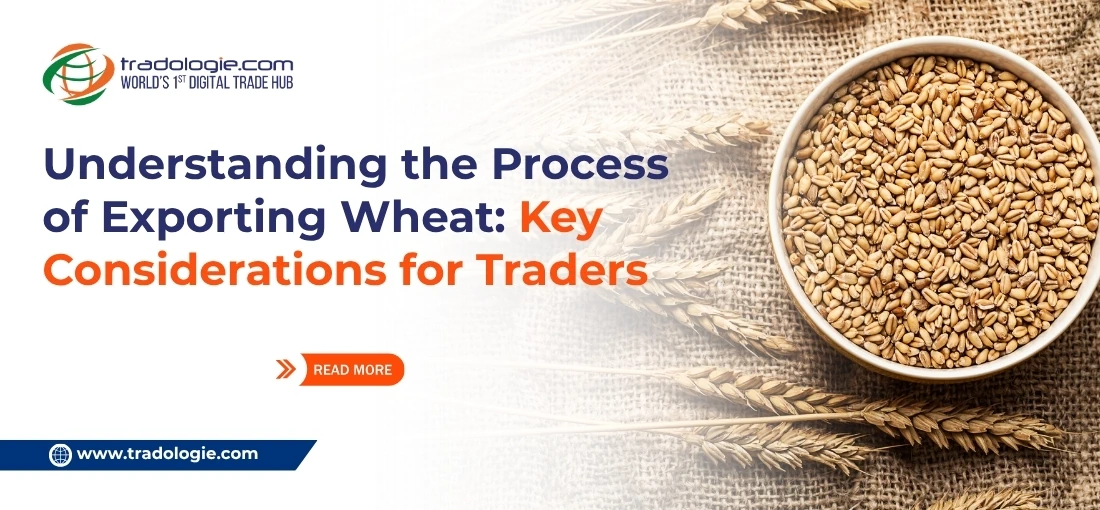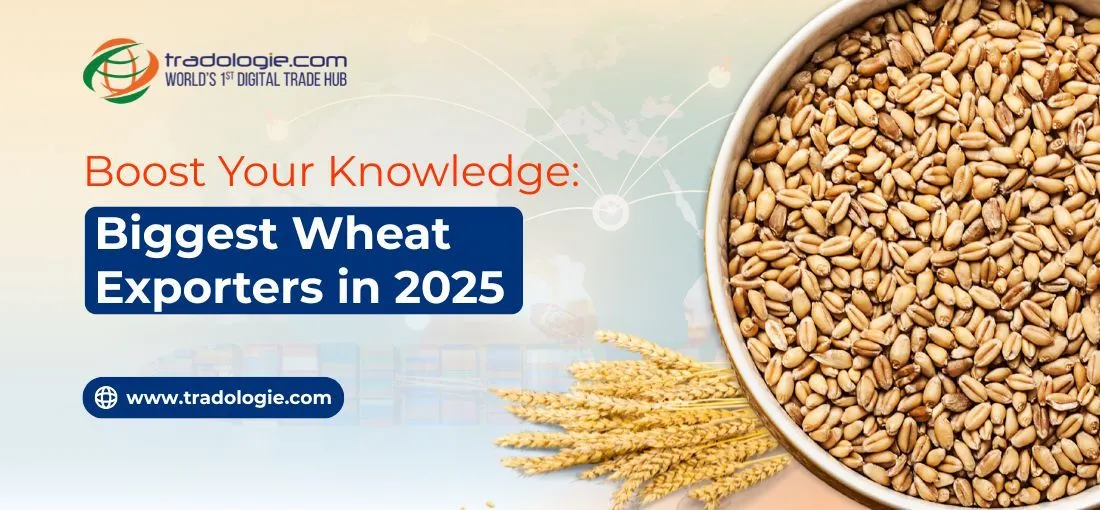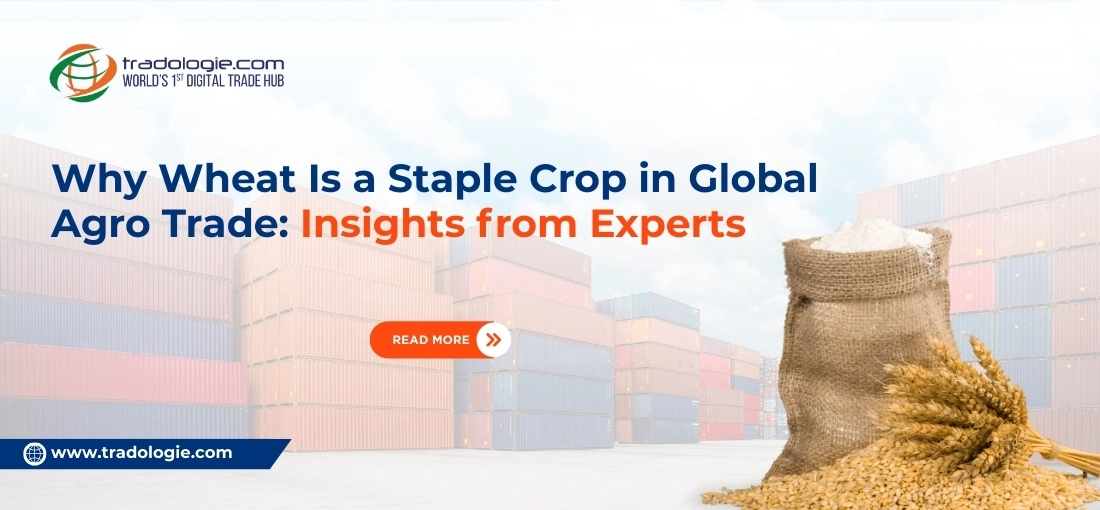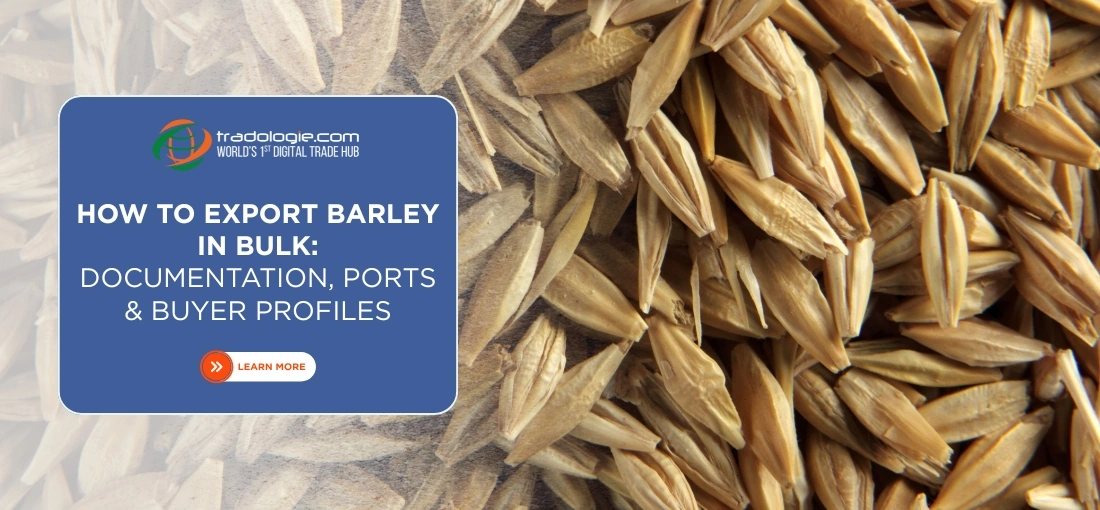Understanding the Process of Exporting Wheat: Key Considerations for Traders
Wheat is one of the most traded farm produce in the world and is the pillar of food systems in both developed and developing countries. The entire global wheat trade was $65.8B USD in 2023 based on figures from OEC. The amount is representative of the enormous size of the global market and huge export and import opportunities.
For commercial wheat exporters, the path to successful exports begins not with the shipment, but with a clear understanding of market dynamics, destination-specific compliance, and contract execution protocols.
Mapping the Global Wheat Landscape
The wheat market is geographically diverse structurally and is governed by geography, food habits, government policies, and climatic variation. Russia, Australia, Canada, United States, France, and Ukraine are among the major exporters of wheat, while most of the wheat is consumed worldwide through imports.
Egypt, Indonesia, European Union, China, Algeria, Philippines, Mexico, Nigeria, and Turkey rank among top wheat importers. In each of these markets, there exist particular variety preferences.
For example, Egypt predominantly imports milling-grade soft wheat for subsidized bread production. Southeast Asian nations like Indonesia and the Philippines favor high-protein hard wheat suitable for noodles and baked goods, while West African countries often import wheat blends based on price and availability.
Understanding which country prefers which wheat grade is not a tactical detail—it's a prerequisite for building an effective export strategy. Traders must therefore align their sourcing, labelling, and documentation with the grain standards demanded by the buyer’s market.
Quality Standards and Compliance Requirements
Export-grade wheat is never a commodity in abstraction. Its trade is bound by technical specifications, especially when shipped across borders where food safety regulations are stringent.
The most critical attributes tested before shipment include:
- Protein content, which varies by destination and product application
- Moisture percentage, typically capped at 12-14% to prevent spoilage
- Test weight and falling number, which impact milling quality
- Foreign matter and damaged kernels, tightly regulated by import authorities.
- Mycotoxin levels, such as aflatoxins and deoxynivalenol (DON), which must remain within the permissible thresholds defined by the destination country
Laboratory certification is standard practice. Exporters also routinely engage third-party inspection agencies—often at the port of origin—to generate detailed Certificates of Analysis, which accompany all regulatory and customs documentation.
For example, the wheat that is exported to the United States must carry USDA-authorized certifications. The European Union mandates compliance with its Maximum Residue Limits (MRLs) and plant health directives. China has its own traceability requirements, particularly for shipments originating from newer or non-traditional suppliers on the other hand.
Pre-Shipment Planning and Documentation
Logistical execution is another critical leg of the export journey. Wheat is typically exported in bulk carriers—often exceeding a specified metric tonnes per shipment. Smaller volumes, premium wheat, or niche grades (like organic or seed-quality wheat) may be shipped via containers.
Contractual terms—whether FOB, CIF, or CFR—must be clearly negotiated to determine responsibilities for freight, insurance, and customs handling. The contract must also specify quality tolerance levels, price adjustments for deviations, documentation timelines, and default clauses to manage non-compliance or shipment delays.
For traders operating across multiple geographies, a robust documentation set may include:
- Commercial invoice
- Packing list
- Certificate of Origin
- Certificate of Analysis
- Phytosanitary Certificate
- Shipping bill and Bill of Lading
- Letter of Credit or other secured payment instrument
Which Grade Suits Which Project Type?
Residential, Low-rise & Medium Commercial Works
For typical homes, offices, schools, and small-to-moderate commercial buildings, Fe 500 continues to dominate. It balances cost, ease of handling, and structural adequacy, especially under standard load profiles. Many Indian contractors and developers prefer Fe 500 as their default construction TMT bars.
Regulatory Risks and Country-Specific Constraints
Wheat exporters must remain aware that regulations are not static. They evolve—sometimes without warning—due to political developments, food inflation controls, or sanitary alerts. For instance, Egypt's GASC (General Authority for Supply Commodities) often imposes rapid changes in supplier eligibility, while countries like Nigeria may adjust import controls in response to currency fluctuations or food inflation.
Traders are well advised to maintain regular contact with local agents, port handlers, and trade consultants in each destination country to remain ahead of such developments.
Financial Risk Management and Pricing Discipline
Global wheat trade is not immune to price shocks. Production surpluses in Russia or Australia, trade restrictions from India, or weather-led yield drops in North America can affect price floors overnight.
Exporters typically face financial exposure across:
- Currency risk, especially when invoicing in USD while incurring costs in local currency
- Freight volatility, which can alter the landed price
- Payment delays or non-realization, especially in markets with liquidity constraints
To mitigate these risks, traders often structure their deals through Letters of Credit, forward contracts, or hedging mechanisms on international grain exchanges. Pricing discipline also includes integrating freight and insurance forecasts during quotation, to maintain margin visibility.
Leveraging Trade Infrastructure and Platforms to Get Buyers
In an increasingly digital trade environment, exporters are relying on transaction-based platforms that facilitate not just buyer discovery but end-to-end trade execution. Platforms like Tradologie, for instance, offer wheat exporters structured access to bulk buyers, real-time quotation mechanisms, live negotiations, and LC and escrow-backed payments.
Unlike listing portals that merely connect sellers with top wheat importers, transaction-oriented platforms are enabling commodity traders to operate with precision, speed, and regulatory alignment. This is especially relevant in wheat, where delayed documentation or quality mismatch can result in shipment rejections or payment withholding.
Conclusion:
Wheat Exporting Requires Operational Precision .
Exporting wheat in today's global trade environment is not a matter of selling surplus inventory. It is a structured commercial process—defined by cross-border compliance, varietal targeting, price hedging, and stakeholder coordination. Every step, from identifying a reliable market to aligning shipping schedules, requires strategic thinking and risk calibration.
For experienced and new wheat exporters alike, the wheat trade offers commercial value—but only for those who can execute with discipline, adapt to evolving regulatory frameworks, and deliver quality that meets destination-specific benchmarks.
In short, success in wheat exporting is less about access to grain—and more about access to credibility, contracts, and continuity in a fast-changing trade ecosystem.




